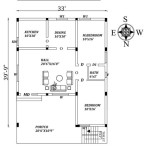Essential Aspects of Home Tornado Shelter Plans
Preparing for a tornado is crucial for ensuring safety during this unpredictable and potentially destructive weather event. A comprehensive home tornado shelter plan outlines the necessary steps to take before, during, and after a tornado to minimize risk and protect your loved ones. Here are the essential aspects to consider when creating your plan:
Identification of a Safe Location
The first step is identifying a safe place in your home where you and your family can shelter during a tornado. This location should be in an interior room on the lowest level of your home, away from windows and exterior walls. Bathrooms, storm cellars, or interior closets are often viable options.
Shelter Preparation
Once you have identified the shelter location, prepare it with necessary items. This includes:
- Emergency supply kit with water, non-perishable food, first aid kit, medications, flashlights, batteries, and other essentials.
- Weather radio to stay informed about tornado warnings and updates.
- Blankets and pillows for warmth and comfort.
- Toiletries and hygiene items.
Shelter Procedures
Establish clear shelter procedures for your family to follow during a tornado warning or sighting. These procedures should include:
- Going to the designated shelter location immediately.
- Crouching down and covering your head with your arms or a blanket.
- Staying in the shelter until the tornado has passed and the danger has subsided.
Practice and Communication
Conduct regular tornado drills with your family to familiarize everyone with the shelter procedures. Ensure that all family members know where to go and what to do during a tornado. Establish a plan for communicating with each other if separated during the event.
Community Awareness
Stay informed about tornado watches and warnings in your area. Sign up for local emergency alerts and monitor weather forecasts. Consider joining community disaster preparedness groups to enhance your knowledge and coordination efforts.
Post-Tornado Actions
After a tornado, it is essential to assess the damage and take necessary precautions. This includes:
- Staying away from damaged areas until authorities declare them safe.
- Checking for injuries and seeking medical attention if necessary.
- Reporting any damage to insurance companies or government agencies.
- Assisting neighbors and community members in need.
Maintaining the Plan
Your home tornado shelter plan is not static and requires regular review and updates. As your family's needs change or as new information becomes available, adjust the plan accordingly. It is also essential to ensure that all family members are aware of any changes to the plan.
Creating a comprehensive home tornado shelter plan is a proactive step towards protecting your family from the devastating effects of a tornado. By implementing these essential aspects, you can provide a safe and prepared environment for your loved ones during this potentially life-threatening event.
Shelter From The Storm Builder

Buildblock Icf Safe Room For Tornadoes Hurricanes

How To Build An Above Ground Storm Shelter Part 1 Shelters Tornado

Taking Refuge Building A Safe Room Part 1 Schaefer
The Wood Tornado Shelter

Fema P 320 Safe Room Design Concrete Plans And Details Building America Solution Center

Buildblock Icf Safe Room For Tornadoes Hurricanes

Fema Approved Safe Rooms Provide Additional Protection From Natural Disasters Liteform
Taking Shelter From The Storm Building A Safe Room For Your Home Or Small Business

Why So Few Storm Shelters In Tornado Alley Hotspot Bbc News








